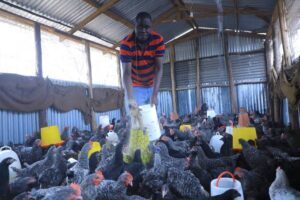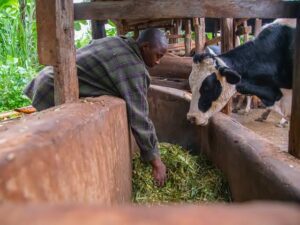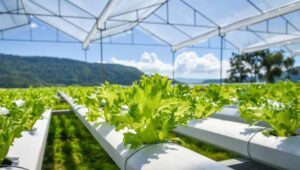Last updated on March 2nd, 2024 at 06:00 pm
So, you’ve decided to start strawberry farming in Kenya.
That’s great:
Strawberries are a delicious and nutritious fruit that can be grown in a variety of climates and soils.
In this article, we’ll discuss the basics of starting a strawberry farm in Kenya, from preparing the soil to harvesting the fruit.
We’ll also talk about the benefits and challenges of strawberry farming in Kenya, so that you can make an informed decision about whether or not this is the right business for you.
Read Also
Benefits and Nutrients of Strawberry Farming
Strawberry farming in Kenya is a lucrative business. It has many benefits that include;
-It is a source of vitamins A, C and E which are antioxidants.
-It has anti-inflammatory properties.
-It helps improve eye health.
-It boosts the immune system.
-It helps in weight loss.
-It reduces the risk of cancer.
Apart from the benefits, strawberry farming in Kenya is also a good source of nutrients. These include;
-Fiber which helps in digestion.
-Calcium which is good for bone health.
-Potassium which maintains fluid balance and regulates heart rate.
-Iron which is necessary for red blood cell production.
Suitable Areas for Strawberry Farming in Kenya
When it comes to strawberry farming, Kenya has a lot of potential given the right conditions. The hilly and mountainous areas are particularly suitable for the crop, as the well-drained soil and cool climate is perfect for strawberry growth. Some other areas that are great for strawberry farming include:
– The coastal region, thanks to the moderating influence of the ocean and the proximity to key markets
– The central highlands, where the cooler climate is perfect for growing strawberries
– The Rift Valley, which offers a wide range of soils and temperate climates that are conducive to strawberry farming
Preparing, Growing and Caring for Strawberry
You will need to prepare the soil before you start planting the strawberries. The soil should be fertile with good drainage. Strawberries love sunlight, so make sure you choose an area that receives plenty of sunlight.
Water the plants regularly, but do not overwater them as they are susceptible to root rot. Apply a layer of mulch around the plants to retain moisture in the soil and keep the weeds at bay. Make sure to remove any wilted leaves and pests from the plants.
Harvest the strawberries when they are ripe, and enjoy your delicious homegrown fruit.
Read Also
Climatic and Soil Conditions for Strawberry Farming
Kenya is well suited for strawberry cultivation due to its favorable climatic and soil conditions. The ideal temperature range for strawberry production is 20-25 degrees Celsius with high humidity levels.
The soil should be well-draining, nutrient-rich soil with good moisture retention capacity.
For the best results, it must have a pH level of between 5.5 and 6.5. Fertilizers should be added during the establishment phase in order to provide essential nutrients to the plants.
Mulching is also recommended in order to prevent weeds from growing and keep the soil temperature stable.
It is also important to ensure that the plants are regularly watered as they can easily face dehydration in hot weathers.
Read Also
Varieties of Strawberry in Kenya
If you are planning to grow strawberries in Kenya, it is important to understand the various varieties available and make a wise decision. There are three main varieties of strawberry grown in Kenya, namely; Albion, Chandler, and Selva.
– Albion: This is the most popular type of strawberry variety grown in Kenya due to its good size and intense flavor. Albion is highly productive and resistant to disease. It produces medium-sized berries with light red color and sweet taste.
– Chandler: This variety is known for producing large fruits with intense red color and sweet-tart taste. It takes a bit longer than Albion varieties for fruit maturity, but it has better shelf life than other varieties.
– Selva: This variety produces medium-sized berries with bright red color and sweet flavor. It has better resistance to disease than other varieties and produces high yields during mid-season months.
No matter which variety you choose, all three have their own advantages and disadvantages that you should consider before making your decision.
Market Size, Opportunities and Cost of Starting Strawberry Farming in Kenya
Now that you know the basics of strawberry farming in Kenya, it’s time to take a look at the market size, opportunities and cost of starting.
Overall, the market for strawberries in Kenya is growing at a rapid rate as more people become aware of its nutritional value. As such, there’s a huge opportunity to take advantage of this growth and enter into the strawberry farming business.
In terms of cost, you’ll need to factor in costs related to land preparation, fertilizers, labor and other materials used for cultivation. Additionally, you’ll need to factor in the cost of the seeds used for planting. However, depending on your budget and plans for your farm, these costs can vary significantly.
All in all, strawberry farming is a profitable venture in Kenya. You can start small-scale with a limited amount of capital, and you do not need to have any prior experience. The benefits of strawberry farming are plentiful, and the fruit is in high demand in the local and international markets. With a little bit of know-how and some hard work, you can make a good living from strawberry farming in Kenya.
Also read



